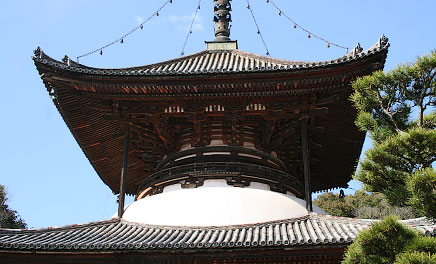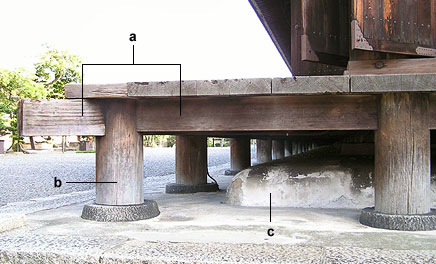|
||
 |
||
1 A squarish bun-shaped mound covered with white plaster. It was devised to create a raised surface on which to place base stones *soseki 礎石 or other supporting members for a wooden floor itayuka 板床 and building framework *jiku 軸. An early example of kamebara may be found at Ichijouji *Snajuu-no-tou 一乗寺三重塔 (1171) in Hyougo prefecture.
2 The rotund, white, plaster-covered form extending above the lower roof of the two-storied *tahoutou 多宝塔, a pagoda dedicated to Tahou nyorai 多宝如来 (Sk. Prabhutaratna tathagata).

Negoroji Daitou 根来寺大塔 (Wakayama)
3 The bun-shaped base stones supporting the pillars of certain Shinto gates *torii 鳥居, including *myoujin torii 明神鳥居, *inari torii 稲荷鳥居 and *ryoubu torii 両部鳥居.
(C)2001 Japanese Architecture and Art Net Users System. No reproduction or republication without written permission.
掲載のテキスト・写真・イラストなど、全てのコンテンツの無断複製・転載を禁じます。


